2021

Maya did her Y1 FLEX with RHSRNbc and is continuing as a Y2 FLEX student. We conducted a short interview with her to learn more about her experience.
Read Maya's commentary on environmental racism in Canada here!
Can you share a bit about yourself, your medical and research interests, and how you ended up working with the RHSRNbc?
I grew up in Summerland B.C., a small town in the Okanagan valley, with a population of roughly 12,000 people. After high school I was interested in living in a different part of Canada and moved to Halifax to complete my Bachelor of Medical Sciences at Dalhousie University. I am currently a second-year medical student at UBC. Our program has a course in which students are given curricular time to work on a scholarly project, called a “FLEX” project. I have previously done research on Alzheimer’s disease and prehabilitation for surgical procedures. For my scholarly project I wanted to expand my knowledge in the field of rural health and climate change. I connected with Stefan, the director of RHSRNbc, and we discussed the work that RHSRNbc is doing and what my interests are. My interests and values aligned well with RHSRNbc and Stefan became my supervisor for my project.
Can you share about the work you did with the Network?
When I first met with Stefan we discussed the subject of environmental racism. I was first introduced to the subject of environmental racism through a course in my fourth year at Dalhousie University and have since been interested in learning more about how it relates to social determinants of health. As part of my FLEX project and under Stefan’s supervision, I completed a literature review on the relationship between environmental racism and social determinants of health in Canada.
Additionally, the Network connected me with Dr. Darlene Sanderson, an Indigenous Research Professor at Thompson Rivers University, to discuss this important topic. In conjunction with some Network members, we co-authored a commentary piece on environmental racism in Canada.
I am currently learning about qualitative analysis and will be involved with this portion of the CCEDARR project. I will also be developing a workshop to be run by medical students at the Society of Rural Physicians of Canada (SRPC) conference.
What is an important thing you have learned throughout this opportunity?
In my initial research on environmental racism, much of what I was reading was from the perspective of environmentalists and sociologists. I felt intimidated, as I lack an academic background in environmental sciences and sociology, and I began to de-value my own perspective. However, throughout the process of writing the commentary piece I started to appreciate my own perspective and realized how important the voices of medical students are in the topic of climate change and climate justice. I feel that there is a lack of climate change discussion in the medical school curriculum. Climate change and ecosystem disruption is something that affects physical and emotional health, and education surrounding this topic is crucial. In the Network, we are currently having discussions on how to educate more medical students on the topic of ecosystem disruption in rural communities, and on how to involve more students in sharing their perspectives and advocating for climate protection.
What are you looking forward to in your work with the Network?
With the Network, I have learned a great deal about climate change and ecosystem disruption in rural communities. Through the CCEDARR project I will be learning about rural community resilience during the Covid-19 pandemic and how this resiliency can translate to addressing climate change. I am excited to experience working in rural communities through clerkship and electives in my third and fourth year of medical school. It will be interesting to learn more from rural communities through first-hand experience and build on my learning thus far.
What are your plans for the future?
Once I graduate, I am interested in doing my residency in family medicine and practicing in a rural community. I am aware that as I continue to grow and learn more about myself my goals may change. Wherever I end up in medicine, I will always continue to advocate for climate protection.
2019
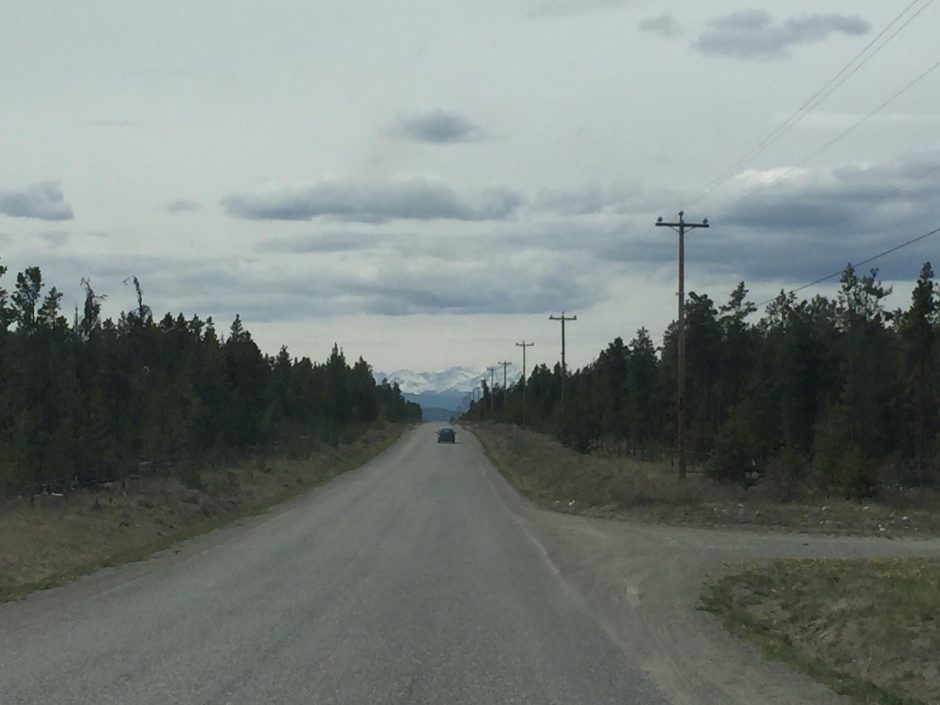
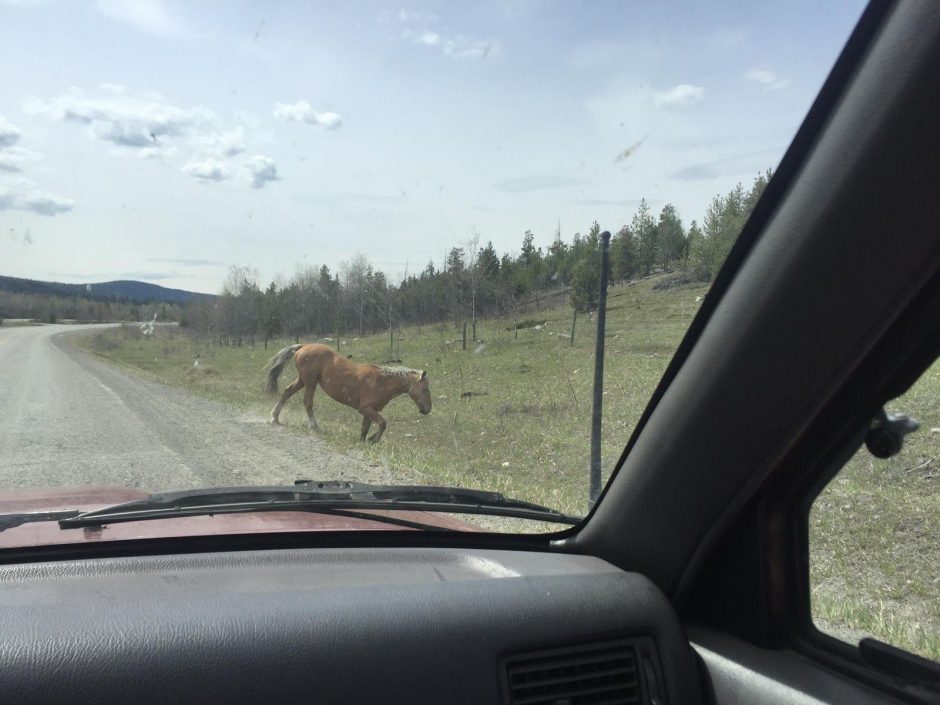
Highway 20 to Bella Coola, with some wild horses keeping us company.
Previous research has identified poor health outcomes in the Bella Coola Valley with a specific community identified concern for youth issues including lack of opportunities for social and recreational activity (Health Profile - Bella Coola Valley and Bella Bella British Columbia, Thomassen, 2003). We hypothesize that there are barriers (educational, environmental, and resource based) that youth in this region face that prevent them from engaging in physical activity and that low physical activity is a contributor to poor health outcomes. To address this hypothesis, we will complete the following aims:
- Aim 1: Connect with the community and build relationships via classroom and outdoor-based educational sessions about physical activity in collaboration with the local Bella Coola Valley elementary and secondary schools.
- Aim 2: Determine youth identified barriers to physical activity by administering a survey to youth through the local Bella Coola Valley elementary and secondary schools.
- Aim 3: Work with community champions to overcome youth-identified barriers to physical activity by creating a community action plan to address them.
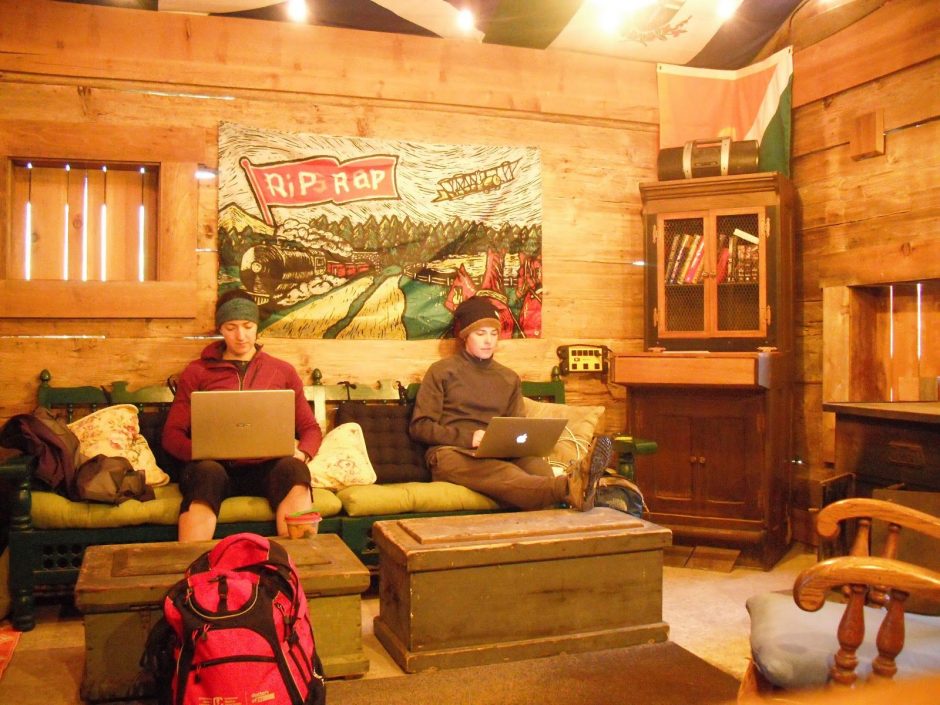
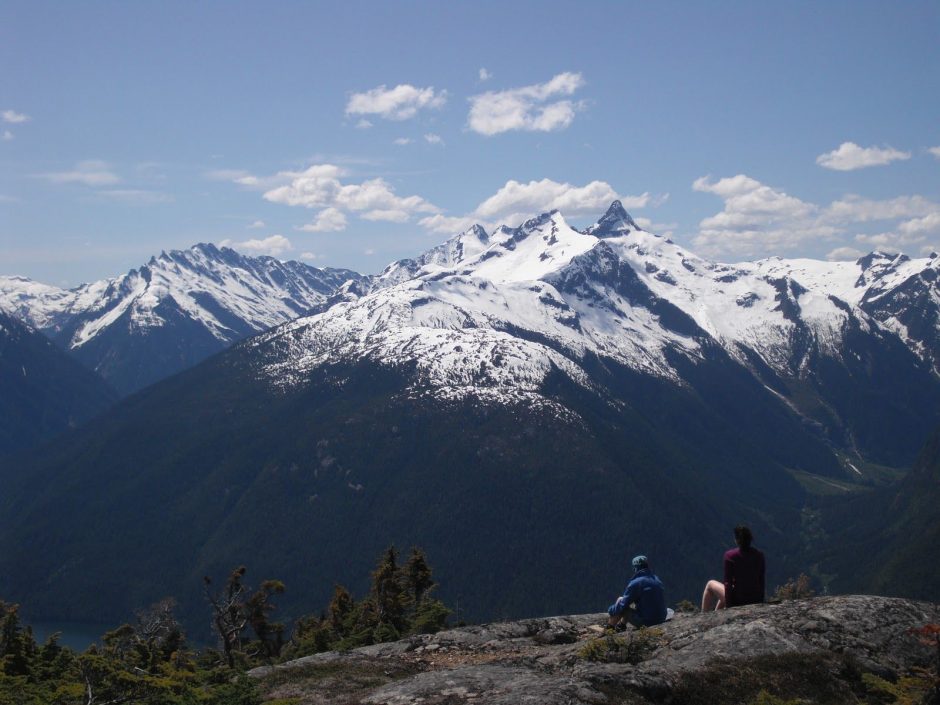

Writing our literature review in “the shack” at the local campground, and checking out Tweedsmuir park on the weekend! The coastal mountains can be seen right from the local school ground.
During the MEDD419 FLEX cycle we completed Aim 1 and began working on Aim 2. To complete Aim 1 on May 13, 2019, we travelled to the Bella Coola Valley. While we were there we delivered: three presentations on physical activity at Nusatsum Elementary School to grade 5, 6, and 7 classes; four presentations at Acwsalcta School to the grade 6 - 9 students on physical activity and grade 10 - 12 students on healthcare careers; and one presentation at Sir Alexander Mackenzie Secondary School to the grade 12 biology students on healthcare careers. We also completed two full days, with different morning and afternoon groups, of trail maintenance and hiking (outdoor educational sessions) with the Acwsalcta grade 6-12 students. This allowed us to build relationships with the youth, principals, and teachers in the Bella Coola Valley.
Some other activities we also had the opportunity to engage in allowing us to learn about the valley community were: attending the Acwsalcta potlatch; hiking with the Nusatsum grade 5-7 students; eating at the Legion community burger night; participating in drop-in ultimate frisbee; participating in the Bella Coola Elementary School bike home from school week events; meeting for conversation and dinner with two local retired physicians; and having dinner with a current local physician. Together all of these activities allowed us to make many connections in the Bella Coola Valley with teachers, healthcare professionals, and other local community members and to learn about the Bella Coola Valley and its opportunities and limitations. To follow through with our time in the Bella Coola Valley and present what we accomplished with the schools to the community we wrote a newspaper article that is awaiting publication in the
local newspaper, Coast Mountain News. Before, during, and after our time in the Bella Coola Valley, we completed a literature review to answer the following four questions:
- General barriers to physical activity in rural/remote communities in Canada
- General barriers to physical activity in youth in rural/remote communities in Canada
- Health status of the Bella Coola Valley and the youth population within.
- Barriers to physical activity in the Bella Coola Valley.
We completed literature searches of Medline OVID, PubMed, ERIC, and CINAHL databases to find our 23 papers for the body of the literature review with several other articles/sources used in the introduction to define our terms and for health and population data. The information gathered will be used to help develop a survey in the future. What we learned about the Bella Coola Valley and from our literature review will be extremely helpful in moving forward with the development of a youth survey (Aim 2) in the Fall during MEDD 429 and the connections we made in the community our absolutely essential to keep moving forward with our project and ensuring that this research is something based on community needs and values.
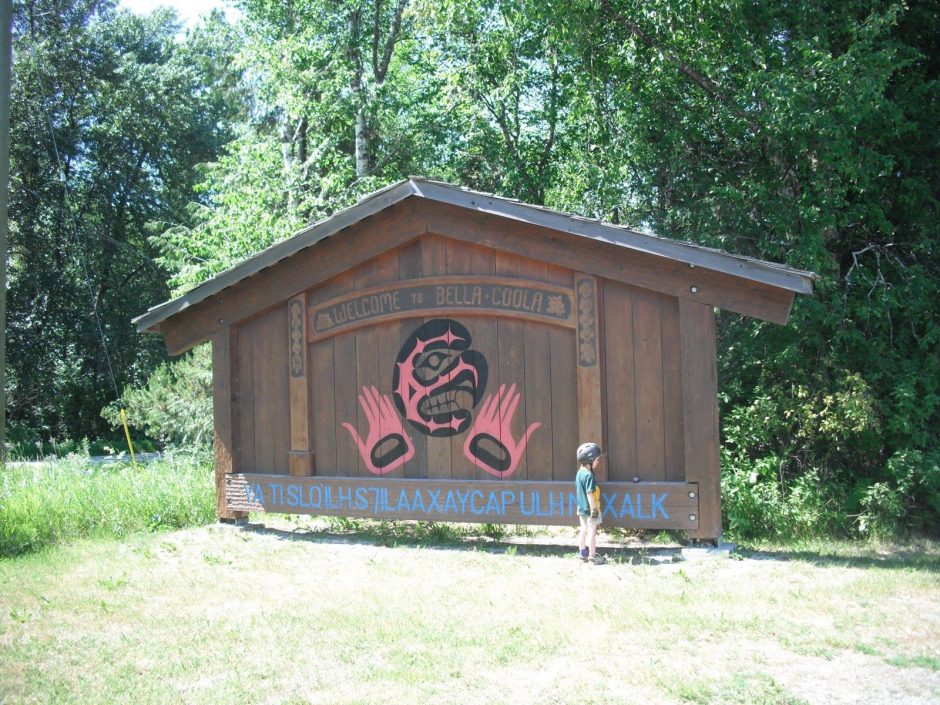
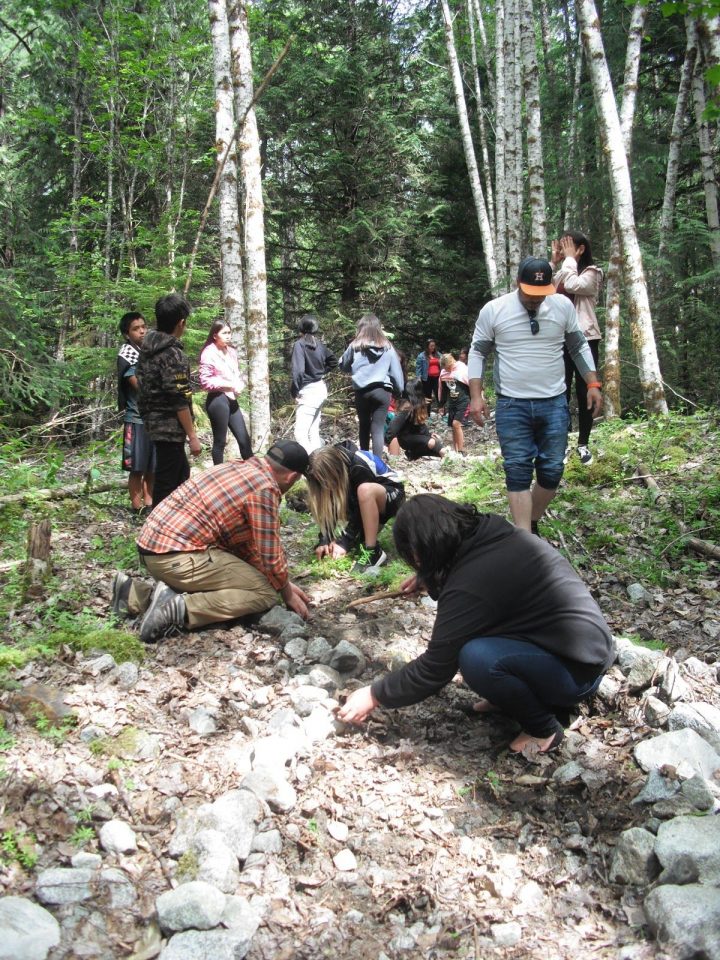
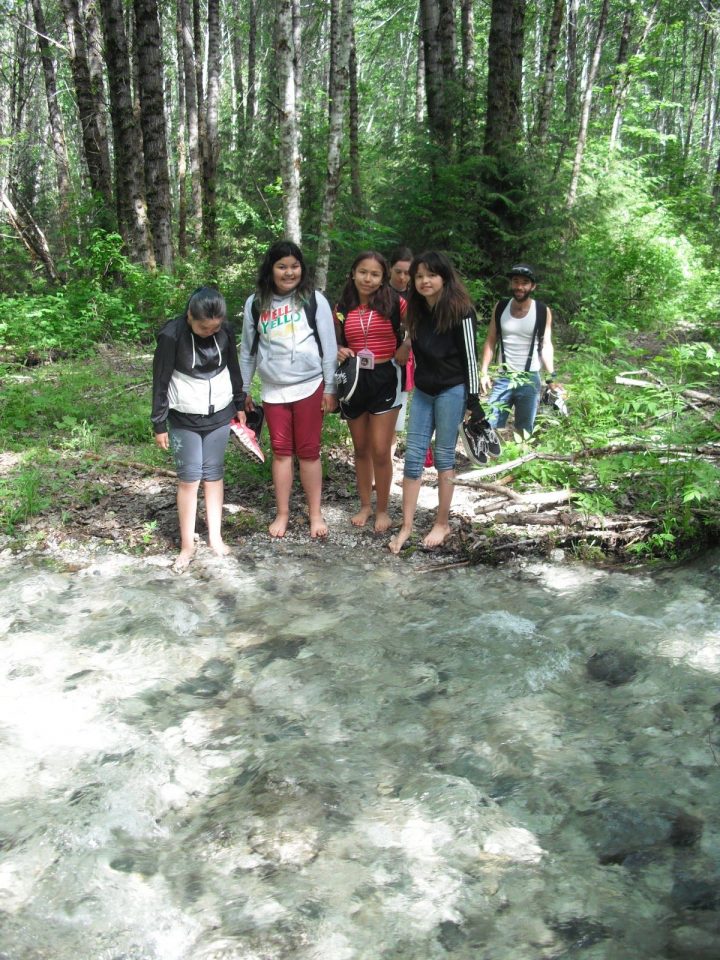
Acwsalcta school out on the Snooka trail system for a trail maintenance day.
Crossing creeks in bare feet was part of the adventure.
In Canada, rural community members receive less access to health care, leading to a disadvantage in some health outcomes. There are, however, some regions of rural Canada such as the East Kootenays that have higher indices of health. Studies on rural health outcomes typically focus on what makes rural communities less likely to be healthy, rather than examining what makes rural communities healthy. Our study aimed to identify factors leading to increased health within communities in the East Kootenays, and to identify ways that health could be improved. Previously, this work has been undertaken in Kimberley, BC. For my project, we chose Sparwood, BC as a focus community of a resource extraction based town. We conducted 10 key informant interviews with community leaders to identify factors that influence health within the community. We found that Sparwood has some features of a traditional industry based town that do not support healthy living, but that there are ample recreation opportunities and an emerging culture that supports a more active and healthy lifestyle.
I have been invited and introduced to the Indigenous community of Sea Bird Island. Seabird Island is a self-governing Indigenous community that is situated in Stó:lō. Territory. One of the community missions is quoted to be that “The Seabird Island Band exists to promote a healthier, self-sufficient, self-governing, unified and educated community. We believe that a healthy community is one that has achieved physical, emotional, mental, spiritual and cultural balance.”. To achieve this aim, they developed a health promotion team consisting a nutritionist and her assistant, two licensed practical nurses, and a mental health professional. Health promotion is often defined as empowerment of people by increasing control of their own health through awareness and prevention techniques. However, it is important to acknowledge that the Indigenous view of health promotion incorporates the individual’s environment, culture, community, and self as a holistic interconnection of health.
The Seabird Island health promotion team gave me the role of researching effective nurse led health promotion strategies that can be utilized in an Indigenous community. I gathered information about current Indigenous focused health promotion strategies through peer-reviewed literature and by reaching out to other Indigenous organizations and First Nations communities. With this information I created a literature review and a resource table that the health promotion team could reference when developing a health promotion strategy for the upcoming year. Within this table I gave suggestions on how the team could use the resources to employ for the health promotion plan for the upcoming year.
Additionally, I engaged with the community via shadowing local physicians, attending the Seabird Island festival, and working with the nutrition team for their community kitchens (community event where people gather to make food together and learn about healthy cooking). I wrote regular reflections about this experience. These reflections helped me be mindful of my experience with the community. My goal is to become a physician that practices in Indigenous communities and I feel confident that these reflections helped me grow towards this goal.
Elk Valley Hospital (EVH) is a rural community hospital in Fernie with a 24/7 Emergency Department (ED) and 20 inpatient beds that services a catchment area of approximately 14,700 people. In addition to its residents, the town of Fernie has a large seasonal population increase over the winter months and sees over 300,000 visitors annually, many partaking in mountain sports. Currently computed tomography scanning (CT) is not available at EVH, which requires patients needing CT to travel (either by private car or BC Ambulance transfer) to the regional hospital 97 km away. This results in significant delays in imaging, potential delays in diagnosis and management, costly inter-facility transfers, and potentially decreased access to care for residents and visitors. The aim of this project is to determine the number of ED patients who required inter-facility transfer for CT imaging in a one-year period, evaluate reasons for required imaging and quantify resulting time delay due to transfer needs. Through these measures the initial steps of Quality Improvement will be completed, establishing if patients’ needs are being met through the current system or if new solutions need to be explored. Future phases of this project could include determining the cost of acquiring, maintaining and staffing local or mobile CT to improve access to healthcare for residents.
The aim of this project was to identify the needs of the autism community in Northwest BC. This project was important to inform the types of changes that we would advocate for and to create programs that can be tailored to the needs of the community. We conducted 30 interviews in Terrace, Kitimat, and Prince Rupert with caregivers, individuals, organizations that work with people living with autism, physicians, educational staff, behavioural analysts, behavioural interventionists, a music therapist and art therapist. The questions helped to identify health, education, social, transportation, employment, housing, caregiver and Indigenous needs that were relevant to these communities. The research was part of Autism BC’s larger venture of program development and delivery, prioritizing the region of Northwest BC. The findings from our needs assessment will inform future services provided to this community.
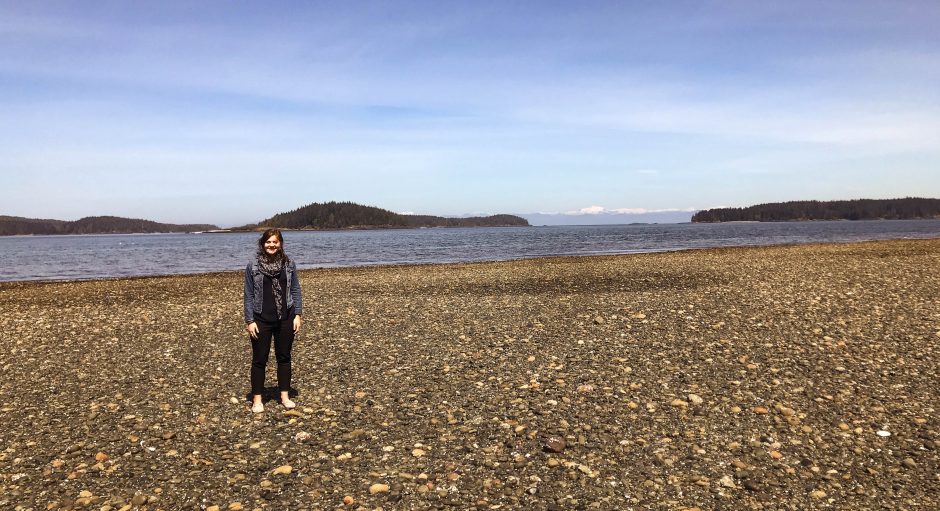
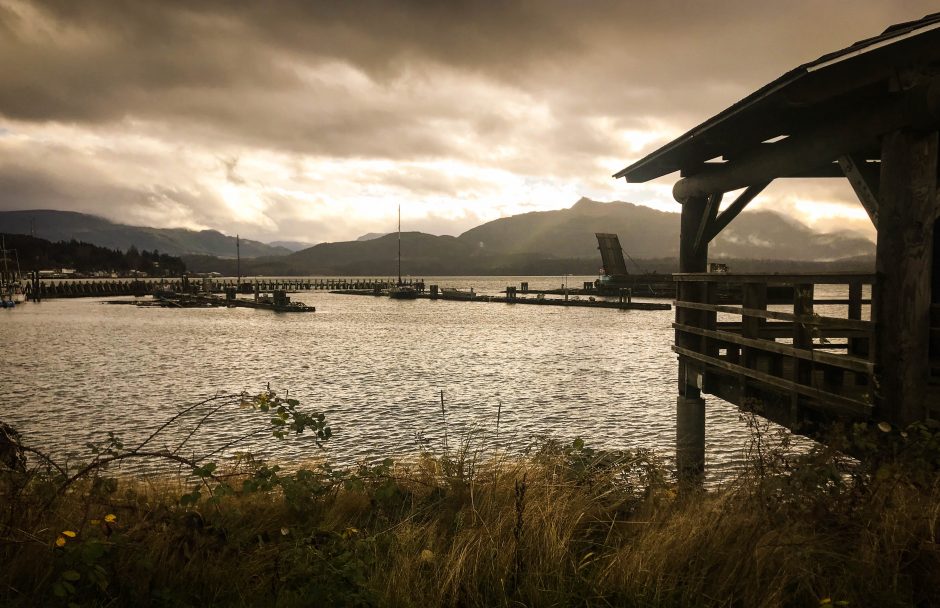
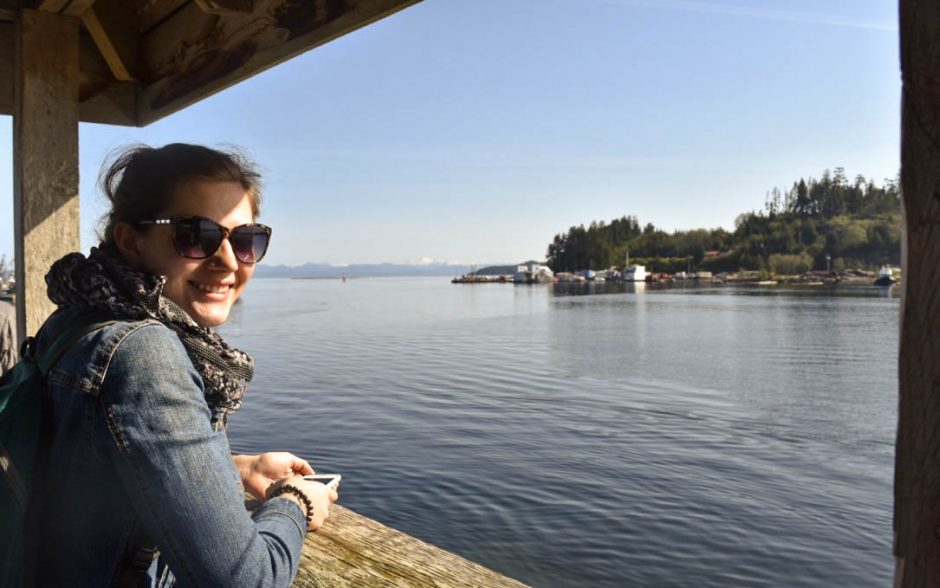
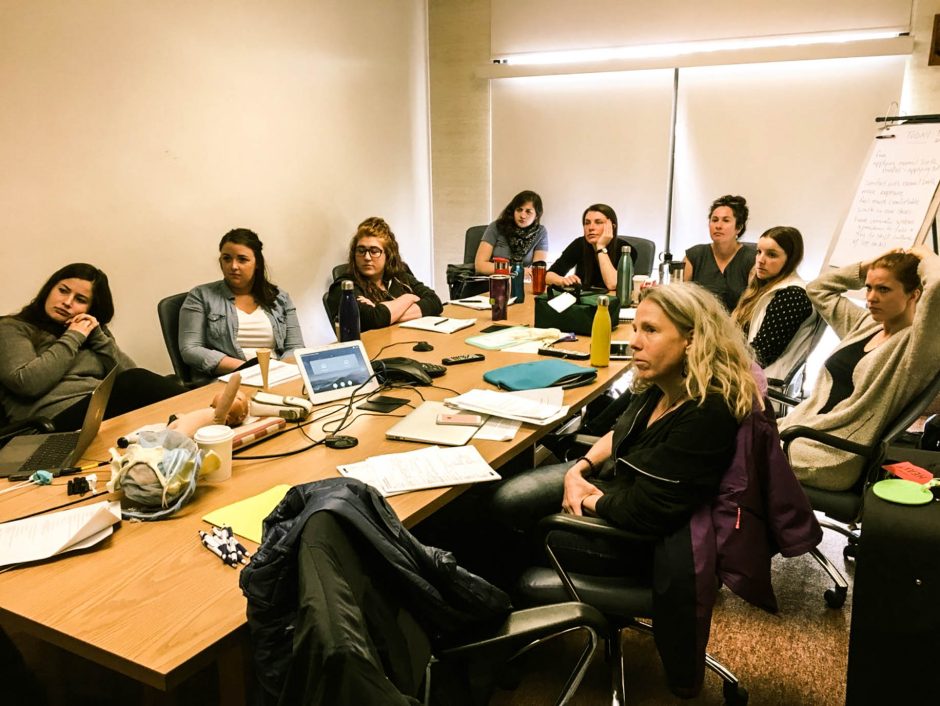
"We are two second year medical students working on a project for the Centre for Rural Health Research (CRHR), under the supervision of Dr. Jude Kornelsen. The overarching project is called: Building Blocks to Sustainable Rural Maternity Care – The North Island Project, and it is an initiative aimed at improving rural maternity services on northern Vancouver Island. There is a clear disparity between the system goals of supplying maternity care within rural communities and the reality of providing these services on the North Island. Because of the geographic isolation and lack of availability of local services in these communities, the necessity travelling long distances for their baby’s due dates has been realized by most mothers. This poses social and financial challenges associated with leaving a familiar environment and community supports. Additionally, compared to BC averages, a relatively large proportion of women on the north island experience heightened social vulnerability, including teen, substance using, single, and indigenous mothers. Providing culturally and socially responsible care for these women is of particular importance. Understanding the experiences of these high-risk mothers has been identified as a clear gap in current literature.Our project, Voices of the North Island, is a participatory health research study, focused on hearing birth and pregnancy stories from mothers and families, facilitating the data feedback loop with communities, and we plan to document our findings into literature. We have been on two trips so far; the first introducing ourselves to the community, and the second for data collection. We have conducted interviews in many communities in the North Island region, including Port Hardy, Alert Bay/’Namgis First Nation, Gwa’sala ‘Nakxwada’xw First Nation, and Kwakiutl First Nation. We are now analyzing our data back at UBC. Our goal is to provide evidence to act as an instigator for change in community policy on maternal healthcare."
2018
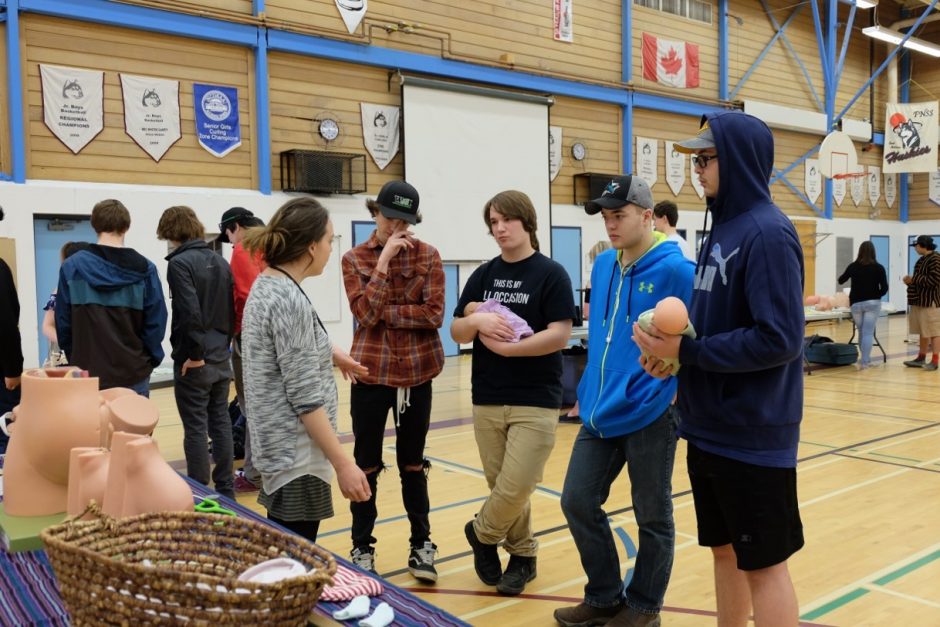
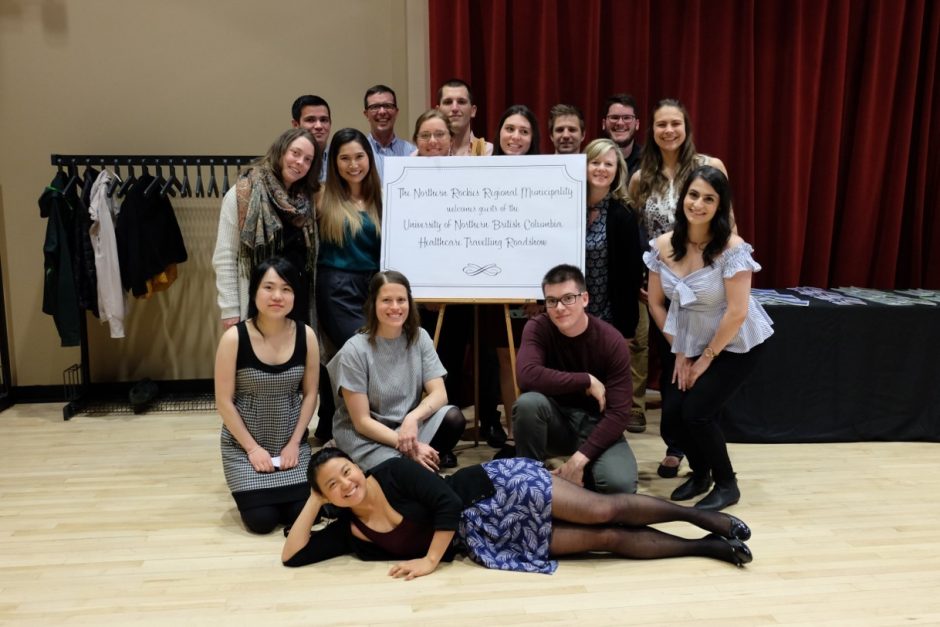
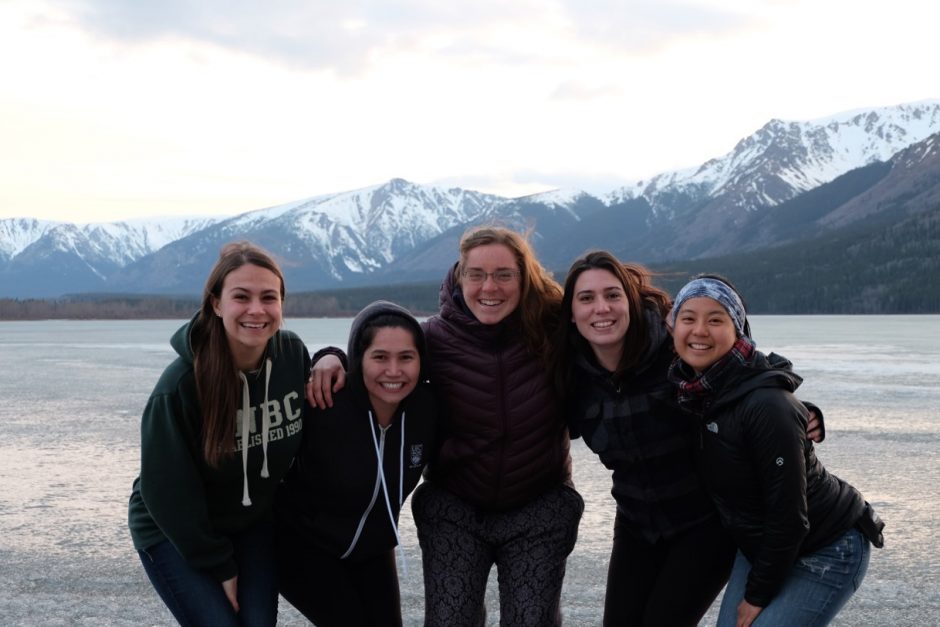
“The Virtual Healthcare Roadshow is a video showcase of healthcare careers targeted towards rural high school students, ranging from medicine and nursing to midwifery and medical radiography. It is part of the Healthcare Travelling Roadshow run out of UNBC and UBCO, which features week-long road trips to various rural high schools across northern and central BC where students from various healthcare fields present about their respective professions. I was the videographer for the Cassiar Roadshow which travelled to Smithers, Dease Lake, Watson Lake, and Fort Nelson from April 29th to May 5th. It was eye-opening to see the northern communities and to interact with students from other professions such as lab tech, OT, respiratory therapy, and pharmacy and gain an appreciation for how they might work together. Additionally, by speaking to community members, I was able to better understand the current state of rural and remote healthcare and what improvements need to be made.”
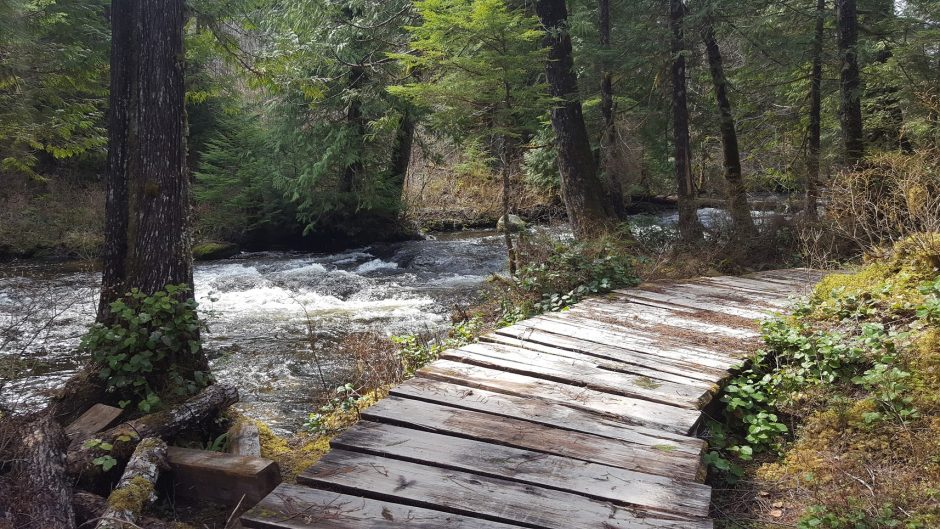
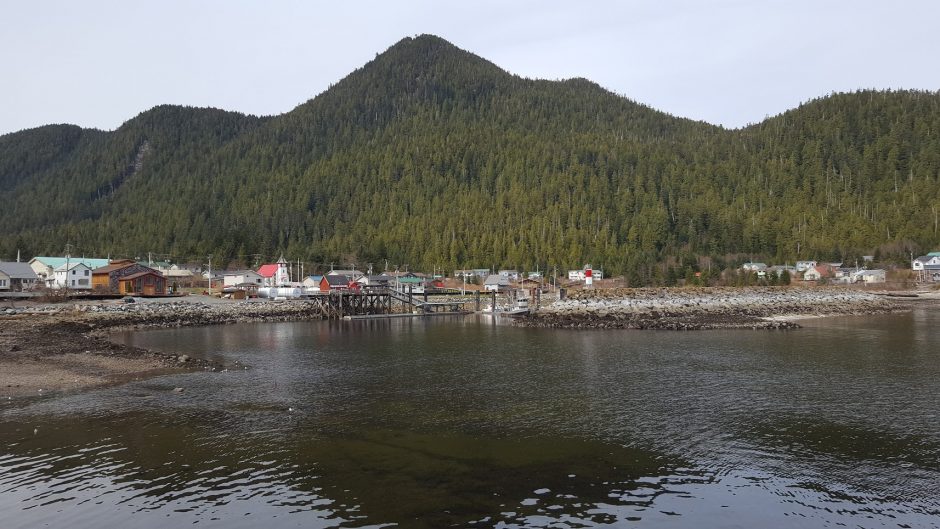
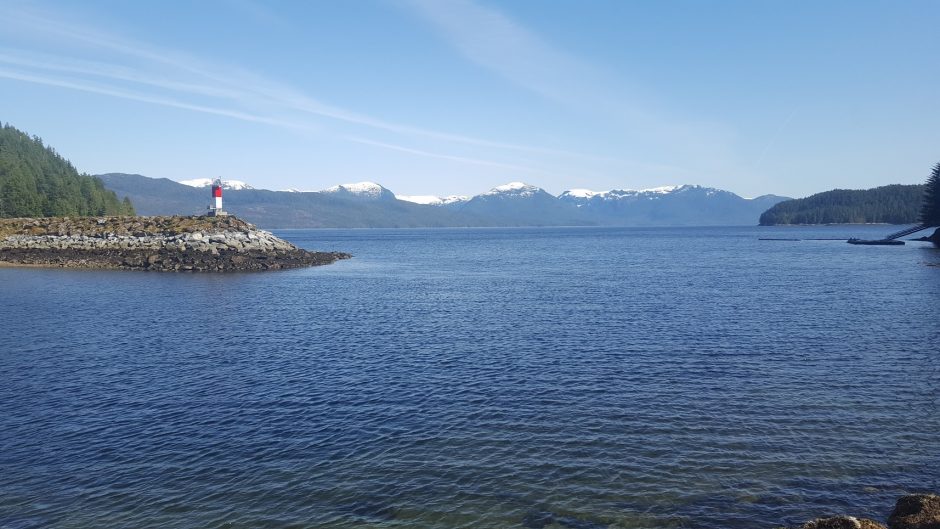
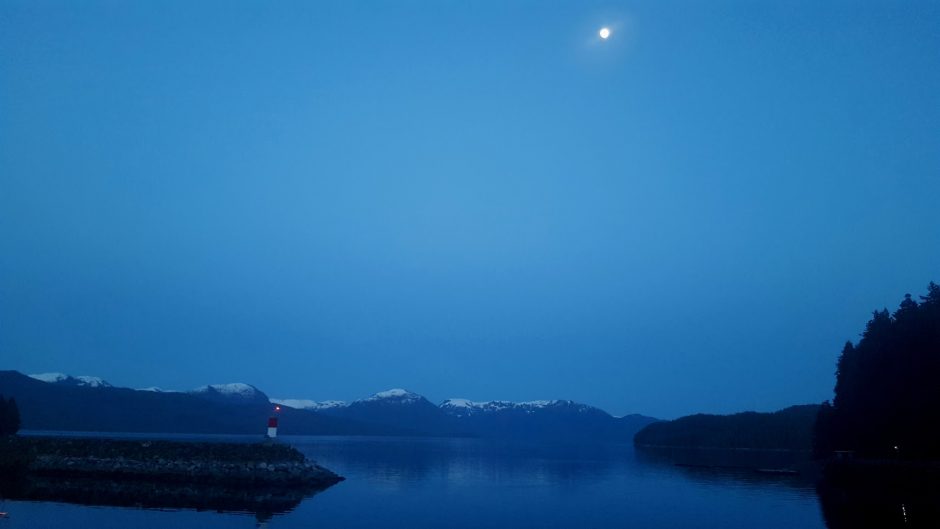
“This project was open to medical students to learn more about what life is like living in a remote First Nations community. This experience exposes medical students early on in their careers to remote communities and how they may differ from larger more accessible centers. The communities involved in this project are very welcoming and eager to share their stories, history and homes with medical students. I was very fortunate to spend 5 days in Hartley Bay, a community of 150 people just south of Prince Rupert, BC. During my stay, we heard stories from elders, went on a whale survey with the Guardians, visited the health clinic and talked with nurses, a mental health worker and mobile diabetes team that was there for a couple of days. We attended an archeology presentation about the Gitga’at land and history which was very informative, and got to explore the land through hikes and kayaking. We also learned how basic everyday tasks, such as grocery shopping, are much more challenging for isolated communities such as Hartley Bay, as there are no local stores and it is only accessible by ferry or float plane. It is a truly humbling experience being welcomed into someone’s home and life the way we were welcomed into Hartley Bay.”
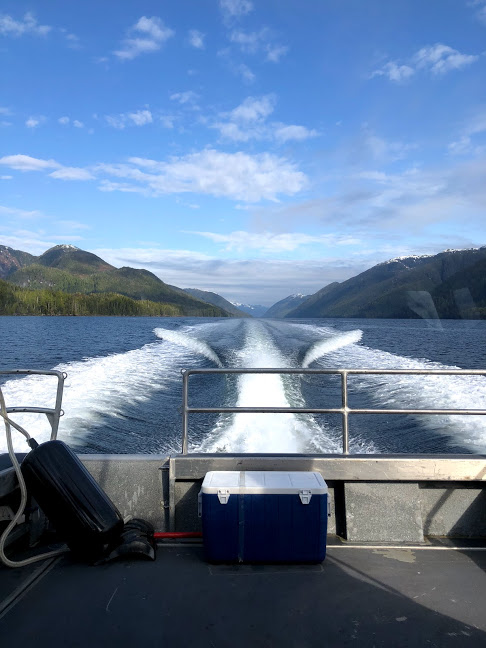
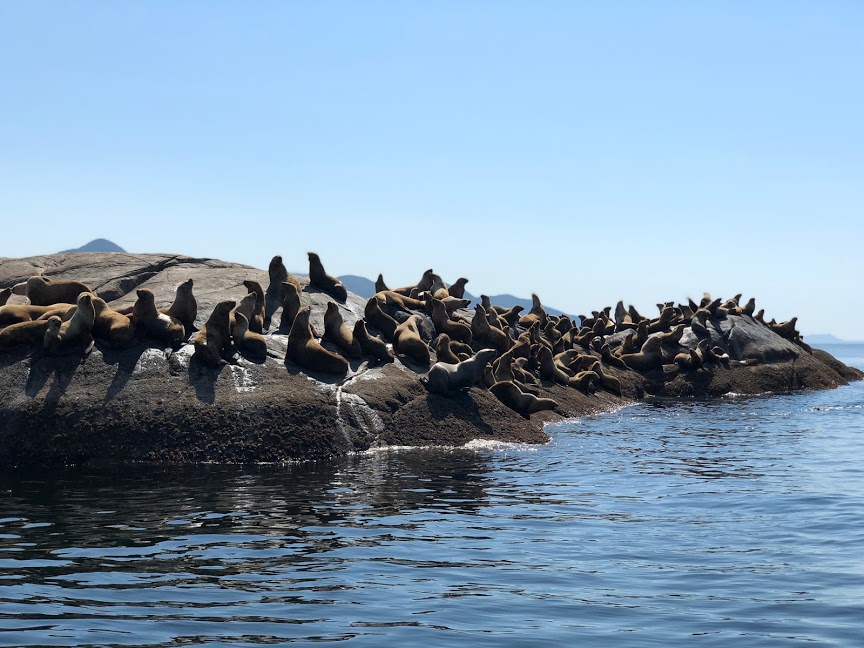
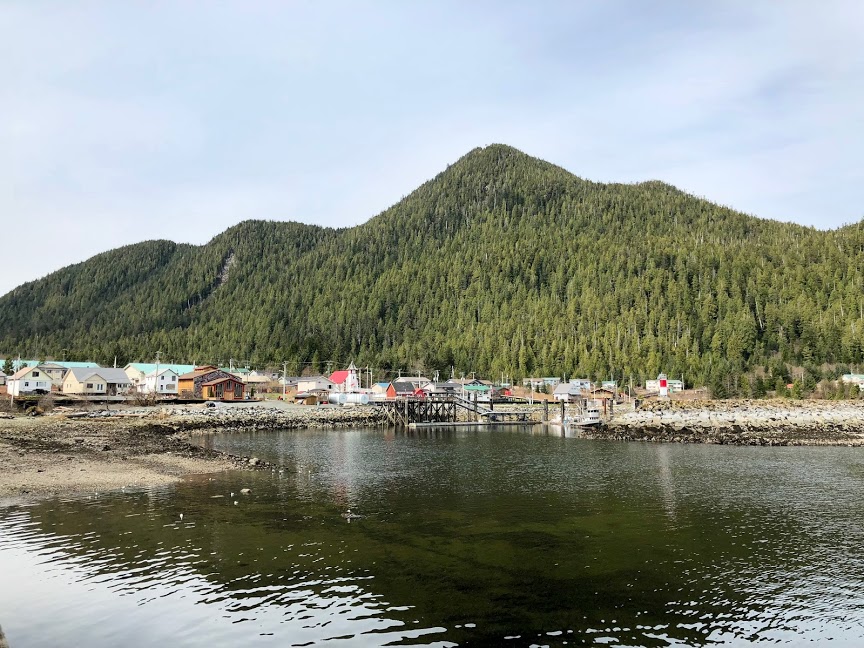
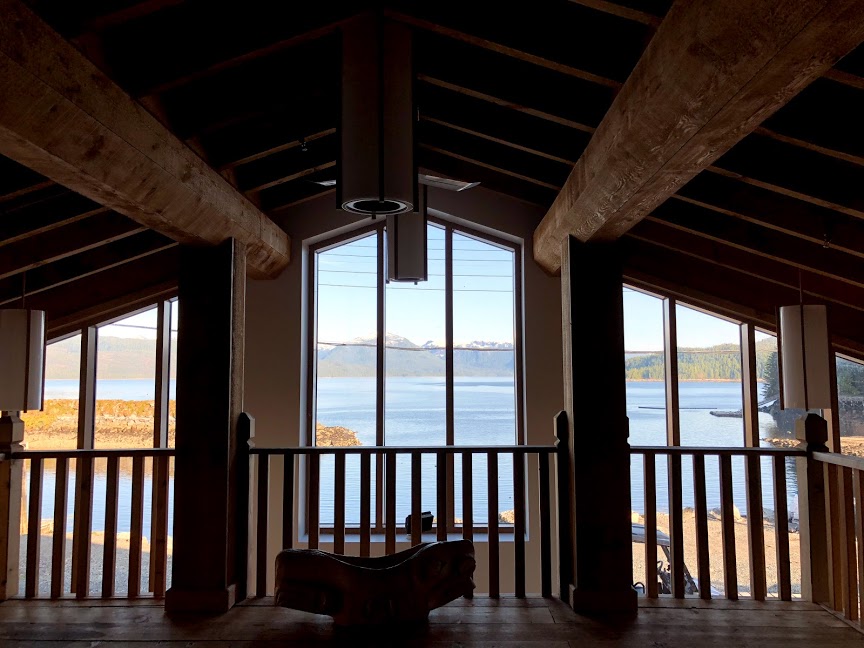
"The First Nations Community Education Program (FNCEP) was established several years ago as a unique partnership between the Northern Medical Program and the First Nations Health Authority, the Health Arts Research Centre at UNBC, and the Northern Heath Authority.
Through FNCEP, we (4 medical students from 1st and 2nd year UBC medical school) visited the Gitga’at First Nations community in Hartley Bay, BC for one week this April. The experience was unparalleled as we soared through mountains on float plane to get to our rural destination. The four of us took a dive head first and were warmly welcomed by the Gitga’at nation. Throughout the week, we learnt from the elders, the children, explored nature and its offerings, and most importantly, connected and learnt from the Gitga’at people about their way of life and their rich history that is closely linked to their health and health outcomes. The lessons learnt in our short week about the rural and indigenous way of life, especially in a community as isolated as Hartley Bay, will be carried with us throughout our medical training and careers."

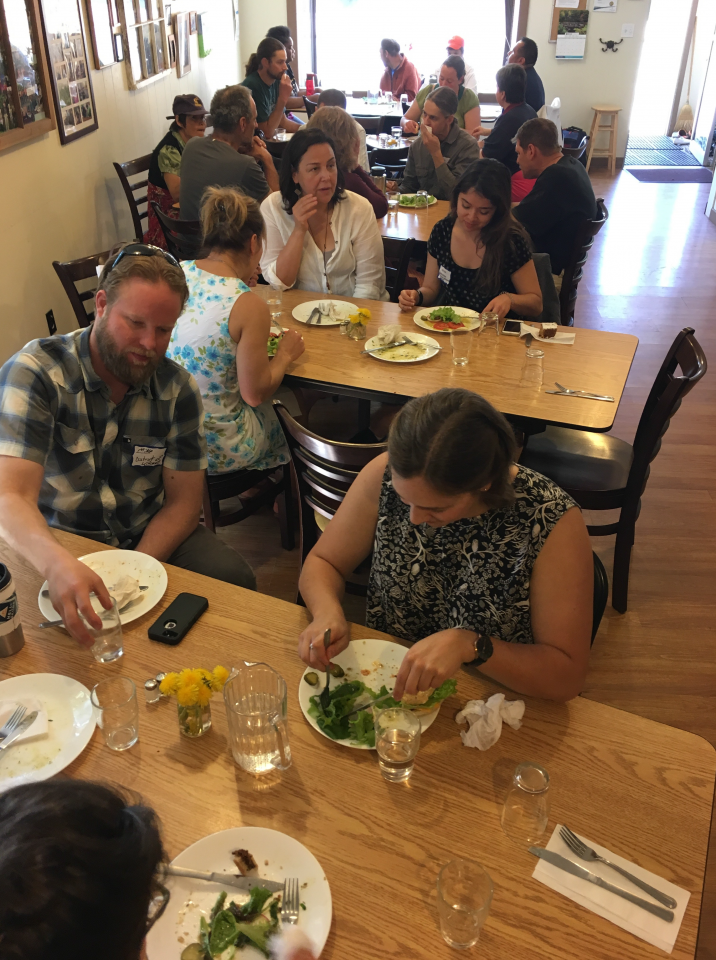
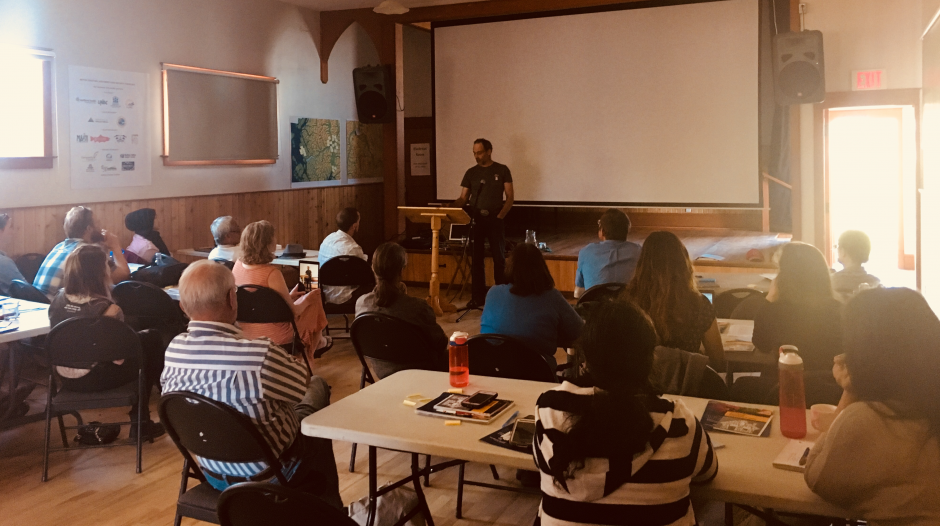
Provide a brief description of your activity and the role you played working with your supervisor (and peers if a group project) in the planning and implementation of the activity.
First: I assisted with the organization and production of the 2018 Food Security Forum in Smithers, BC. The goal of this two day event was to promote increased food security and resilience by supporting initiatives as prioritized by communities, and encouraging networking of key players. My role was in contributing to the logistical arrangements, communicating with various speakers, participants, and sponsors, and researching certain projects (e.g. root cellars). This role also included note-taking throughout the event, and compiling these and other forms of recordings into a final report, which has been edited by my supervisor and posted to their website. I also wrote a personal reflection to better understand my experience.
Second: I completed a policy scan of food security related policies along Hwy 16 from Prince George to Smithers. A brief review of literature was used to inform my conception of “food security,” its different facets, and what it means at a community/local level. I primarily examined the OCPs of the communities and rural areas along this stretch of highway, but also looked at Northern Health policy, First Nations Health Authority policy, and Public Health policy along this corridor. The purpose of this scan was to identify themes in the policy as well as ascertain where gaps occur; the scan includes a summary table in the hopes it can contribute awareness of this issue. A more extensive scan in an overlapping subject area is being performed by a Masters student from SFU.

